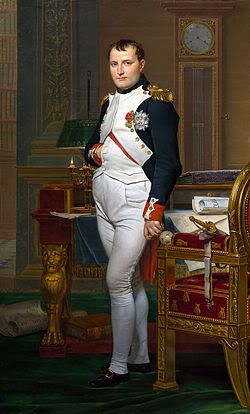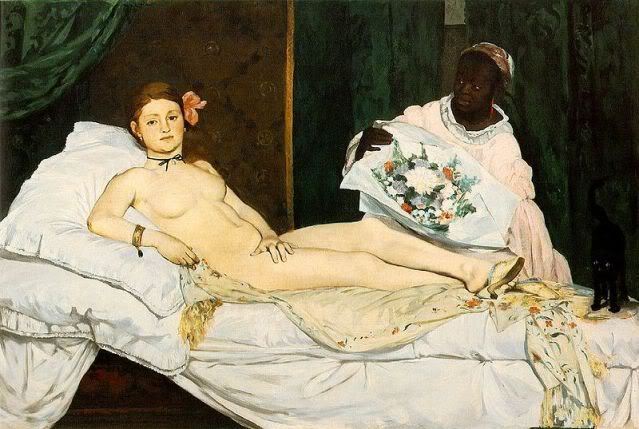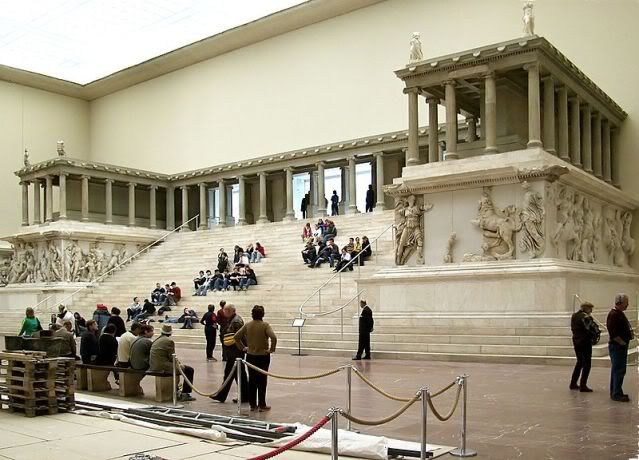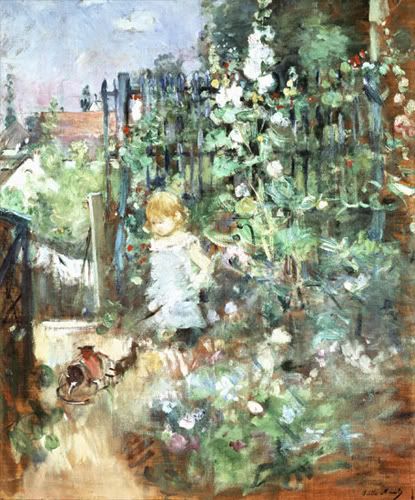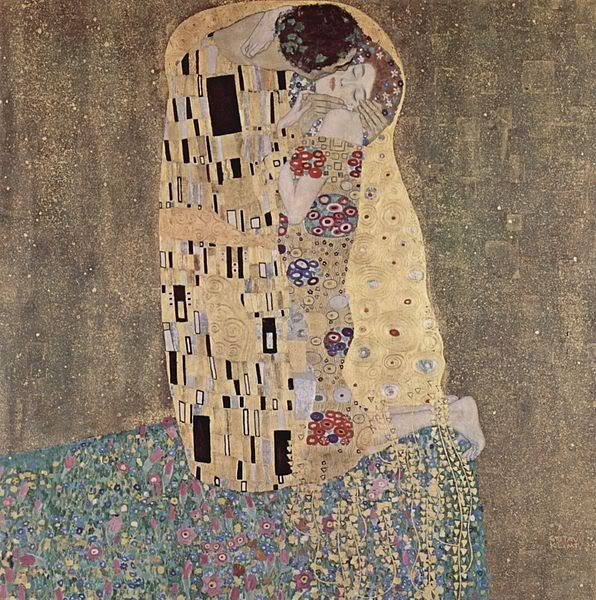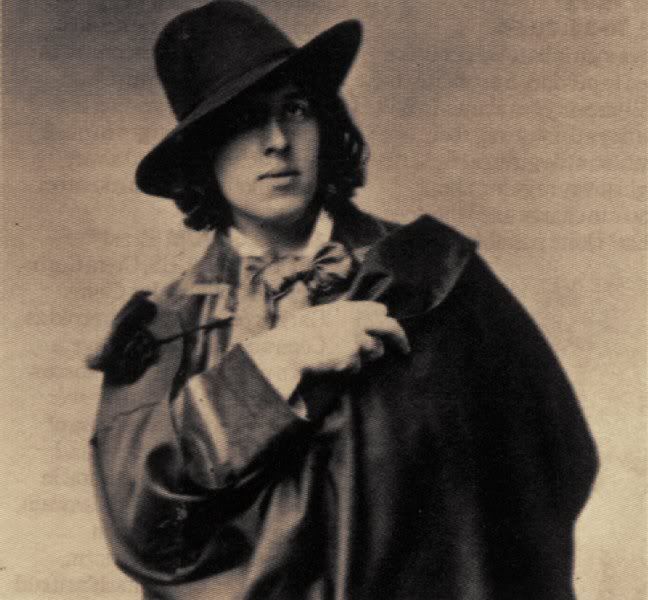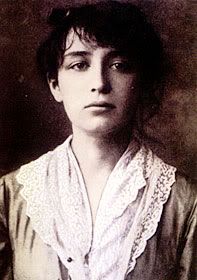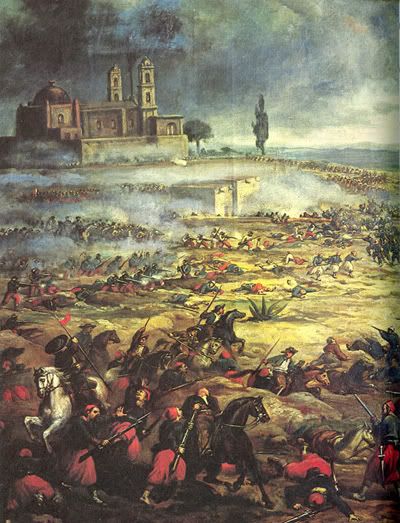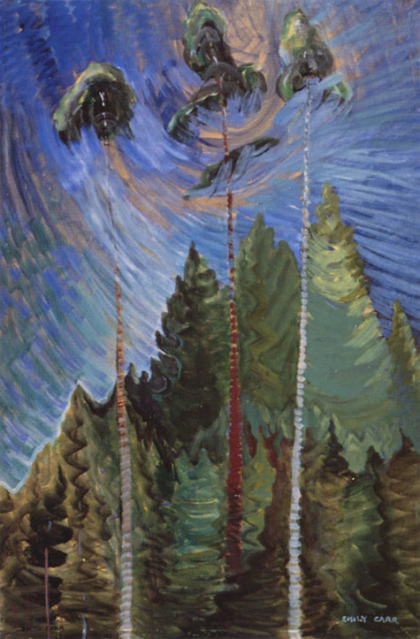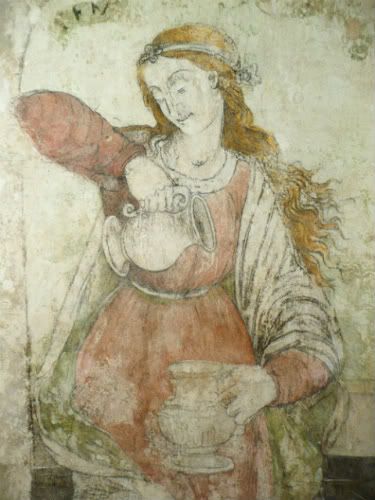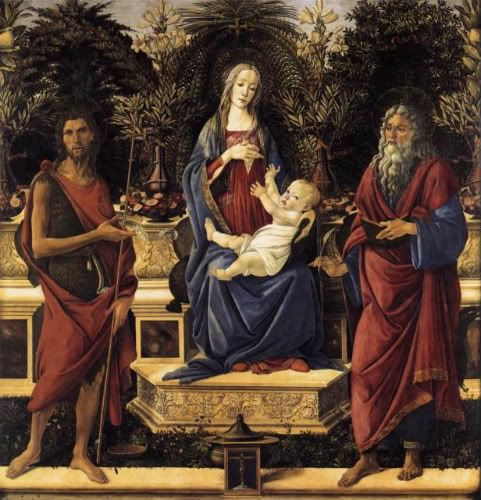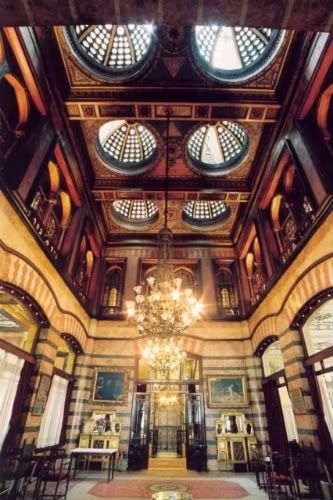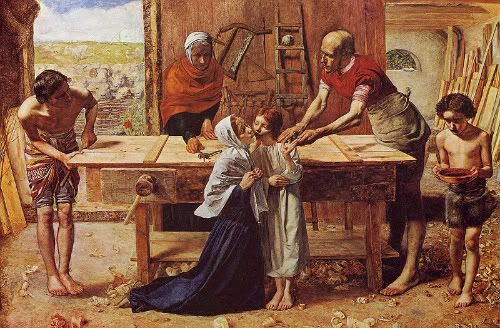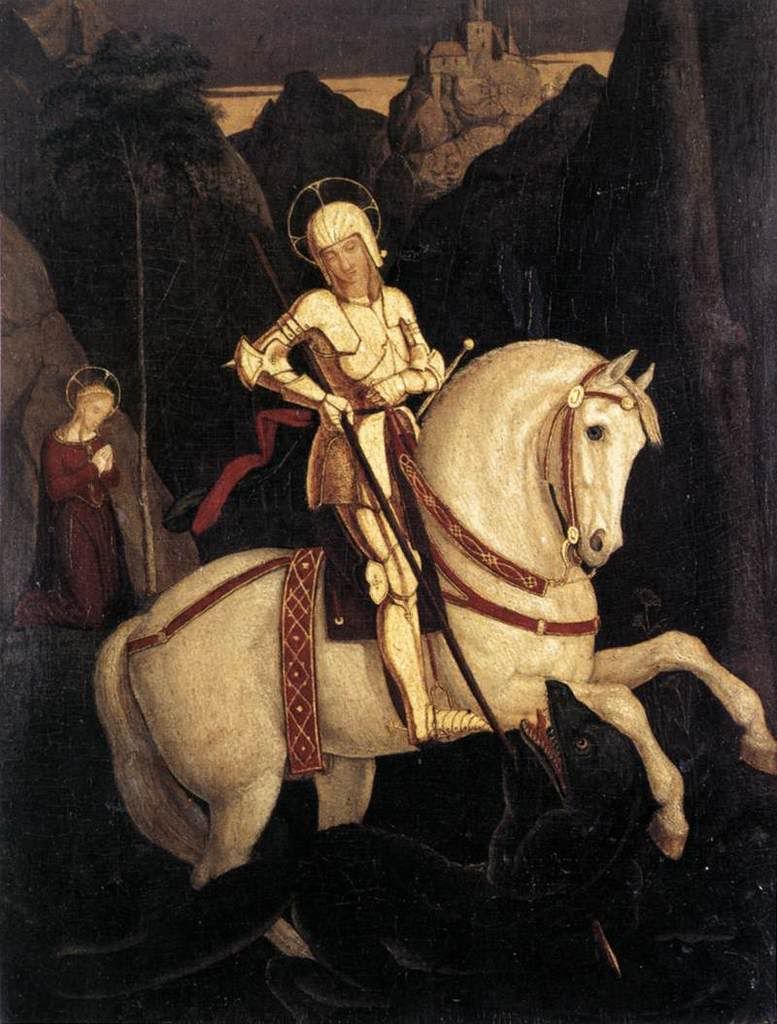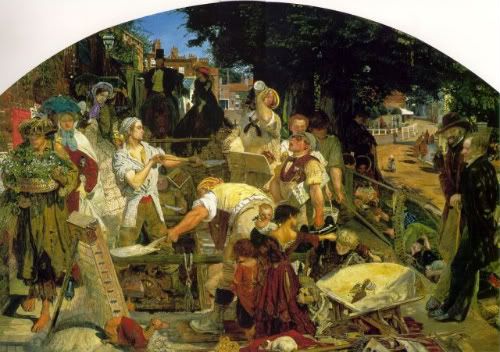There are dozens of recipes for "Washington Apple Cake" out there, but this one is special for a couple of reasons. The first is that the recipe for this cake was handed down to me from my Great-Grandmother (whom I believe discovered it in the newspaper). The second is that it contains a lot more (and different) spices than most apple cakes! Most ask for no more than two teaspoons of cinnamon, whereas this recipe calls for two tablespoons, plus a 1/2 teaspoon of nutmeg. The cinnamon might seem excessive when you are making the cake (the batter is practically red, and the cake IS red when you take it out of the oven). But the apple/cinnamon/nutmeg combination actually produces a mild cinnamon flavour once it has been baked (I can't stand things that have heavy-handed flavours, so trust me when I say it's not spicy!). The cake is perfectly moist and topped with a delectable caramel frosting. A wonderful treat for a chilly fall evening!
Washington Apple Cake
1/2 cup butter
1 1/2 - 2 c. sugar
2 eggs
2 cups flour
2 tsp. baking soda
1/2 tsp. nutmeg
2 T cinnamon
1/2 tsp. salt
6 large apples - 3-4 cups diced (peeled)
2 tsp. vanilla
Oven 350 degrees 35 min. (That's all my great-grandmother wrote, but I would recommend baking until a toothpick inserted in the cake comes out clean, which is about 40 minutes).
Caramel Frosting
1/2 cup butter
1/2 teaspoon salt
2 T evaporated milk
1 cup firmly packed brown sugar
Mix in small saucepan and heat lightly to just melt butter. Mix until sugar dissolves. Add enough confectioners sugar to make consistency right for spreading.
Those are the directions that came with the recipe. You will notice there are no directions provided for the cake - I think my great grandmother expected you to know how to mix a cake! Personally, I always prepare my wet ingredients and dry ingredients seperately and then add the dry ingredients to the wet in my mixer.
I find it really funny that she equates 6 large apples with 3 cups of diced apples! Today's apples are much, much larger than they were 100 years ago.(it reminds me of recipes from the colonial period, where they tell you to use 1/2 dozen eggs when three would do today - eggs were a lot smaller then!). For this recipe, I used 4 galas, which equaled about four cups when finely diced. Also, I would add that you can safely increase the amount of apples in the cake up to 4-5 cups. If you are using apples from your own orchard, then it will probably take six!
I made this cake for tea last week, and my oldest daughter (who just turned two) had a wonderful time eating cake and drinking tea from real teacups. This was her first tea party, and she clearly felt like quite the little grown-up!
Monday, November 14, 2011
Washington Apple Cake
Posted by
Margaret
at
12:57 PM
7
comments
![]()
![]()
Labels: recipes
Monday, November 7, 2011
I'm back!
I'm back! I have been enjoying time with both my lovely daughters (the youngest of whom - shown above - is now just a little over 2 months old). This time I really allowed myself to take a break from blogging, social media etc., and it's been a wonderful experience. That said, I feel that it's just about time to return to the virtual world! I definitely have missed you all, and hopefully there are some readers left, since I realize that three months is an eternity in blogging!
I also have to admit that one thing that has kept me from coming back sooner is that I've been having a bit of an identity crisis over what I would like The Earthly Paradise to be, especially now that I no longer have as much free time to devote to writing more serious Art History stuff (something I realize I haven't done in a while). Also, I can't help but notice that my interests have changed quite a bit since I first started this blog back in 2007! So, there might be a few tweaks in the works, which is something that I've been debating with myself about for quite a while. I'm still not entirely sure what this will mean, so stay tuned!
Posted by
Margaret
at
1:42 PM
9
comments
![]()
![]()
Labels: news
Wednesday, August 3, 2011
Art History Carnival August 2011
Welcome to the August 3, 2011 edition of the art history carnival!
architecture
"Well into the 19th century, the educated viewer could read a building as one reads a book, but today the language of classicism is largely mute to us, much of its meaning lost and eroded by time and the relentless evolution of human societies." Andrew Zega and Bernd H. Dams presents a symbolism refresher-course in Architectural Symbolism 101: Geometry posted at NOTED @ Architectural Watercolors
Helen Webberley presents Napoleon's house in exile: St Helena posted at ART and ARCHITECTURE, mainly, saying, "When Napoleon Bonaparte was sent into exile for a second time, his British captors were very serious about him not escaping again. So they selected St Helena Island, a remote Atlantic island located in the tropics off the west coast of Africa.
Longwood House was Napoleon’s residence, from Dec 1815 until his death in May 1821. Formerly the summer residence of the Lieutenant Governor, Longwood was converted for the use of Napoleon in 1815 and then expanded. Architectural plans and photographs are available. Longwood House has since been accurately restored by French curators and now the house is now an important historical museum owned by the French government."
art history
Feeling in the mood for a little mystery? David Clark shares Piece 22 – Michelangelo’s Fight in the Brancacci Chapel | Michelangelo's Puzzle posted at Michelangelo's Puzzle, saying, "Michelangelo's Puzzle is a 90 piece blog story that will reveal the secret message on the Sistine Chapel ceiling on November 1, 2012 - the 500th anniversary of the ceiling's dedication."
Sedef Piker presents a review of Professor Mary Garrard's landmark article exploring the reception of women artists in the Renaissance, with a focus on Sofonisba Anguissola in Sofonisba Anguissola and the Problem of the Woman Artist posted at Three Pipe Problem
H Niyazi presents Platonic receptacles, Leonardo and the Salvator Mundi posted at Three Pipe ProblemThe post presents a summary of the available provenance and technical data of the newly attributed Leonardo painting depicting Christ as 'Salvator Mundi'. H also provides an iconographical survey of the 'Salvator Mundi' motif in art through preceding ages and examines a Platonic reading for Leonardo's unique depiction of the orb in Christ's left hand, a departure from traditional depictions of a 'globus cruciger'."
Susan Benford compares and contrasts Edouard Manet's Olympia with Titian's Venus of Urbino in Famous Painters: Edouard Manet (she also raises an interesting question: Cezanne and Manet have both been referred to as the "fathers of modern art" - which artist deserves it more?). The post can be found her blog Famous Paintings Reviewed - An Art History Blog.
Finally, Francis P. DeStefano explores the artistic relationship between Giorgione and Titian (and raises interesting questions, such as, could Titian have been hired by Giorgione as a contract worker?)in his post Giorgione and the Young Titian posted at Giorgione et al...
That concludes this edition. Thank-you to everyone who participated. I would also like to thank those who sent in submissions that I was unable to include due to the age of the posts. I have been receiving a lot of wonderful posts each month (thank-you to everyone who has worked so hard to get the word out about the carnival!), which has made it impossible to include older posts.
I will be making an announcement shortly as to whom will be hosting the next issue of the Carnival, since it falls right around my due date (my husband and I are expecting a new addition to the family at the end of this month). I imagine I'll have my hands full next month!
Technorati tags:
art history carnival, blog carnival.
Posted by
Margaret
at
8:05 AM
4
comments
![]()
![]()
Labels: blog carnival
Wednesday, July 27, 2011
Call for Submissions for the August Issue of the Art History Carnival
The August edition of the Art History Carnival will be posted on Wednesday, August 3, 2011. You can submit articles for inclusion in the carnival until 48 hours before the issue comes out (Monday, August 1st).
What kind of blog articles will be included?
Posts covering all periods and art mediums are welcome, as are posts discussing art criticism, architecture, design, theory and aesthetics. All submissions will be carefully reviewed, so please, no spam.
What is a Blog Carnival?
According to Wikipedia, a blog carnival is "a type of blog event...similar to a magazine, in that it is dedicated to a particular topic, and is published on a regular schedule, often weekly or monthly. Each edition of a blog carnival is in the form of a blog article that contains permalinks links to other blog articles on the particular topic."
Blog Carnivals are a great way to help your blog reach a new audience and to make new friends in the blogosphere!
Who can submit?
Anyone, as long as you have a blog! And If you don't blog, you can submit one of your friend's articles (except they better be good--I'll be reading them!).
Can I host a carnival?
Absolutely! Please let me know if you'd be interested in hosting the next issue of the carnival.
How to submit articles
You have two options:
1. Use the submission form provided by Blog Carnival (this is easiest!).
2. Send me an email. Include the title and permalink URL of the post you are nominating for inclusion in the carnival, along with the name of the blog. Please put "Art History Carnival" in the title of your email to help me recognize it in my inbox!
One final thing to keep in mind:
To keep things current, posts should have been written after the date of the last Carnival. If a post is six months old, I won't be able to include it in the Carnival, no matter how great it is.
Thank you for your participation! Share the news with other bloggers!
Posted by
Margaret
at
8:27 AM
0
comments
![]()
![]()
Labels: blog carnival, news
Tuesday, July 26, 2011
Florence + The Machine, The Band Perry and the Lady of Shalott in Music Videos
Today I thought I'd share a video from Florence + The Machine. My husband actually made me sit down and watch the video because he noticed all the mythological and Pre-Raphaelite references! We first encountered Florence + The Machine while watching the Colbert Report, and our first reaction (other than noticing that she had a great voice), was that she looked like she'd fallen out of a Pre-Raphaelite painting. Apparently this is no coincidence, and you'll notice that most of her videos contain references to the Pre-Raphaelites, though the video for "Rabbit Heart" is one of the most overt. From the minute you see the water behind her you can tell this is going to end in a send-up of the Lady of Shalott!
For an even heavier dose of the Lady of Shalott, check out The Band Perry's "If I Die Young". My daughter actually discovered this one on Vevo the other day!
Someone from the band is clearly a big fan of the Pre-Raphaelites! Of course Lady of Shalott is the most obvious reference (the video actually closes with a shot of Tennyson's poem), but I thought the scene at :38 (with the mother at the window) was a little evocative of John Everett Millais' Mariana. It's a very well done video, and the song is beautiful as well.
Posted by
Margaret
at
4:09 PM
5
comments
![]()
![]()
Labels: millais, music, mythology, pre-raphaelites
Wednesday, July 6, 2011
Art History Carnival July 2011
And now to the July edition of the Art History Carnival...
art history
Monica Bowen presents altar of pergamon and baroque scholarship posted at Alberti's Window, saying, "This post largely deals with historiography, explaining why Baroque scholarship became popular in the late 19th and early 20th century." The post examines how the arrival of the Altar of Pergamon in Berlin caused revived interest in Baroque art because of the similarity it bore to the Baroque style (amusingly, some scholars even began referring to the Hellenistic style as "ancient Baroque").
Susan Benford presents Famous Paintings of Berthe Morisot posted at Famous Paintings Reviewed - An Art History Blog. Morisot was the first female artist to exhibit her works with the French Impressionists (the painting above is entitled "Child with Staked Roses", 1881). Her paintings are lovely and I appreciate that Susan has taken the time to share a little more about Berthe's life and work!
Next, take a moment to stroll along the streets of Paris with Anna (a student of Dr Ben Harvey, who is blogging as part of an independent study class on 19th century art from Paris), who has written a lovely blog post about one of her walking tours near her Paris Apartment entitled The Neighborhood posted at anna on art. Manet's Gare Saint-Lazare (shown above) is one of the many paintings that was created just a stone's throw away. Also, I highly recommend that you take time to read another of her posts, "Manet: Inventeur du Moderne," which she published July 5th. It's a lovely review of a current exhibit at the Musée d’Orsay, and is not to be missed!
exhibits
Paul Doolan presents a fascinating review of Rodchenko and Ai Weiwei in Photography Museum, Winterthur posted at ThinkShop. The exhibit highlights the artists' differing "takes" on communism. Rodchenko (shown above left) began his artistic life rather enamored of the Soviet Revolution, while Ai Weiwei recently experienced a brief stint in Chinese prison as the result of his subversive art.
Helen Webberley presents Vienna Art and Design exhibition, in Melbourne posted at ART and ARCHITECTURE, mainly, saying, "A blockbuster exhibition in Melbourne called "Vienna Art and Design: Klimt, Schiele, Hoffmann and Loos" prompted a re-analysis of the Vienna Secession. The paintings, architecture, furniture, jewellery and textiles explore and display modernism, individualism, nationalism and the creation of a new style concentrating on the use of colour, design and opulent glamour."
philosophy of art
Jean-Michel Basquiat's work catapulted him to rock-star status in the early 1980s. Although he died at just 27 years of age, his work continues to fascinate and inspire. junhax reviews a documentary of his life and work in Jean-Michel Basquiat | Junhax posted at Junhax
That concludes this edition. Submit your blog article to the next edition of
art history carnival
using our
carnival submission form.
Past posts and future hosts can be found on our
blog carnival index page.
Technorati tags:
art history carnival, blog carnival.
Posted by
Margaret
at
7:20 AM
8
comments
![]()
![]()
Labels: blog carnival
Thursday, June 23, 2011
Call for Submissions for the July Issue of the Art History Carnival
What kind of blog articles will be included?
Posts covering all periods and art mediums are welcome, as are posts discussing art criticism, architecture, design, theory and aesthetics. All submissions will be carefully reviewed, so please, no spam.
What is a Blog Carnival?
According to Wikipedia, a blog carnival is "a type of blog event...similar to a magazine, in that it is dedicated to a particular topic, and is published on a regular schedule, often weekly or monthly. Each edition of a blog carnival is in the form of a blog article that contains permalinks links to other blog articles on the particular topic."
Blog Carnivals are a great way to help your blog reach a new audience and to make new friends in the blogosphere!
Who can submit?
Anyone, as long as you have a blog! And If you don't blog, you can submit one of your friend's articles (except they better be good--I'll be reading them!).
Can I host a carnival?
How to submit articles
You have two options:
1. Use the submission form provided by Blog Carnival (this is easiest!).
2. Send me an email. Include the title and permalink URL of the post you are nominating for inclusion in the carnival, along with the name of the blog. Please put "Art History Carnival" in the title of your email to help me recognize it in my inbox!
One final thing to keep in mind:
To keep things current, posts should have been written after the date of the last Carnival. If a post is six months old, I won't be able to include it in the Carnival, no matter how great it is.
Posted by
Margaret
at
1:29 PM
2
comments
![]()
![]()
Labels: blog carnival
Friday, June 3, 2011
Art History Carnival June 2011
Welcome to the June 3, 2011 edition of the Art History Carnival.
art history
Kelly Knox presents Nekyia: Picasso and the Suicide Death of the Poet Carlos Casagemas posted at KWKNOXART -- ART AS TRANSFORMATION, saying, "This article explores the thematic shift in Picasso's early work surrounding the death of his friend and constant companion in Paris and Barcelona, very early in his career. Many critics (and possibly even Picasso himself) see the events of this period as the genesis of his blue period."
Susan Benford presents Matisse, Modern Art, and The Cone Collection posted at Famous Paintings Reviewed - An Art History Blog. In this post, Susan examines Matisse paintings from the Cone Collection which are currently on view at the Jewish Museum in New York until September 2011.
I was fortunate to have the chance to see one of the paintings from the Cone Collection at the recent Matisse exhibit at the Art Gallery of Alberta. The painting - Two Girls, Red and Green Background - was the last to make its way into the Cone Collection, and was seen by Matisse as his best work, and I quite liked it myself! You can catch a glimpse of the painting on Susan's website - I couldn't include it here due to copyright restrictions.
Susan Benford has also written a post entitled Female Painters: Sofonisba Anguissola . Sofonisba was among the most famous female artists of the Italian Renaissance (her self-portrait can be seen above). Read Susan's post to find out more about this talented young woman was already famous at age 15 - reminds me a little of Millais!
Helen Webberley presents Widener's sublime art treasures in Philadelphia posted at ART and ARCHITECTURE, mainly, saying, "This post investigates how the newly wealthy family of PAB Widener came to own one of the most important Gilded Age (c1880-1920) private art collections assembled in the USA. First he built a stunning mansion, Lynnewood Hall. Then he filled the mansion with Louis XV furniture, stunning porcelain, and paintings by Raphael, Vermeer, Rembrandt etc.
Later his son Joseph, himself a patron of the National Gallery, agreed to donate most of his family’s collection (600 objects) to the Washington gallery at the request of President Roosevelt."
Dr Ben Harvey presents Oscar Wilde: London Models posted at Emanata (Dr Ben Harvey). Have you ever been curious about the living and working conditions of artists' models in late-Victorian London? In this fascinating post, Dr. Ben Harvey reviews Oscar Wilde's essay "London Models", which was originally published in 1889 in the English Illustrated Magazine. Harvey has included images from the original illustrated essay, so you can see the article the way it was meant to be read. This post is not to be missed, and don't forget to read Wilde's original article as well!
Romeo Vitelli presents The Sculptress posted at Providentia, saying, "Camille Claudel was one of the greatest female artists of all time. And she paid the price for it." This piece follows Claudel from her early artistic endeavors and relationship with Auguste Rodin through to her eventual decline and final decades spent in an asylum. It's not a cheerful story, but the melodrama is the stuff of operas. A must read!
Francis P. DeStefano presents Giorgione and Patenier posted at Giorgione et al..., which compares and contrasts Giorgione's Tempest with Patenier's Rest on the Flight into Egypt.
Ever notice that historical figures often look very different from painting to painting? Especially in the days before photography? Zsombor Jékely presents The Tale of Two Lovers and an Unknown Image of Emperor Sigismund posted at Medieval Hungary. In this post, Zsomber discusses the variations between a number of images of Emperor Sigismund of Hungary. It's a fascinating discussion (and the Tale of Two Lovers is interesting as well!).
That concludes this edition. Submit your blog article to the next edition of
art history carnival
using our
carnival submission form.
Past posts and future hosts can be found on our
blog carnival index page.
Technorati tags:
art history carnival, blog carnival.
Posted by
Margaret
at
6:05 AM
6
comments
![]()
![]()
Labels: blog carnival
Tuesday, May 24, 2011
Call for Submissions for the June Issue of the Art History Carnival
What kind of blog articles will be included?
Posts covering all periods and art mediums are welcome, as are posts discussing art criticism, architecture, design, theory and aesthetics. All submissions will be carefully reviewed, so please, no spam.
What is a Blog Carnival?
According to Wikipedia, a blog carnival is "a type of blog event...similar to a magazine, in that it is dedicated to a particular topic, and is published on a regular schedule, often weekly or monthly. Each edition of a blog carnival is in the form of a blog article that contains permalinks links to other blog articles on the particular topic."
Blog Carnivals are a great way to help your blog reach a new audience and to make new friends in the blogosphere!
Who can submit?
Anyone, as long as you have a blog! And If you don't blog, you can submit one of your friend's articles (except they better be good--I'll be reading them!).
Can I host a carnival?
How to submit articles
You have two options:
1. Use the submission form provided by Blog Carnival (this is easiest!).
2. Send me an email. Include the title and permalink URL of the post you are nominating for inclusion in the carnival, along with the name of the blog. Please put "Art History Carnival" in the title of your email to help me recognize it in my inbox!
One final thing to keep in mind:
To keep things current, posts should have been written after the date of the last Carnival. If a post is six months old, I won't be able to include it in the Carnival, no matter how great it is.
Thank you for your participation! Share the news if you know someone who likes to write about art!
Posted by
Margaret
at
1:41 PM
0
comments
![]()
![]()
Labels: blog carnival
Monday, May 16, 2011
Andy Warhol: Manufactured
Starting May 28th, the Art Gallery of Alberta will be hosting a special exhibition of Andy Warhol's work. Andy Warhol: Manufactured is an internationally touring exhibition of Warhol's work, and the AGA is the only gallery in Canada that is offering the exhibition, which will include his early drawings and commercial illustrations, his better known works, and also many of the films he made.
Warhol was certainly larger than life, and his work as an artist is easily eclipsed by his persona and the celebrity world he inhabited - which is a bit of a shame, in my view, since he was very talented! But as an artist he certainly demonstrates that keen observation of a culture is often a far more powerful force than pointed social critique. And his work certainly has enjoyed enduring popularity. I notice that one of his self-portraits just set an auction record for the artist last Wednesday when it sold for a cool $38.4 million.
Pretty nifty for the seller's estate, since the estimate was $20-30 million. Of course, I'm sure the publicity surrounding this piece didn't hurt either - CNBC featured the self-portrait last month during it's Power Lunch program (Christie's had direct interest in the sale, hence all the extra publicity). I often wonder how differently art auctions would turn out if there was more publicity surrounding recent auctions of, say, Dante Gabriel Rossetti's work.
Andy Warhol: Manufactured will run May 28 - August 21, 2011
Posted by
Margaret
at
1:10 PM
3
comments
![]()
![]()
Labels: art gallery of alberta, museums, news
Thursday, May 5, 2011
Feliz Cinco de Mayo!
Happy Cinco de Mayo everyone! For those of you that aren't aware, Cinco de Mayo commemorates the victory of the Mexican forces over the French at the Battle of Puebla, which occurred on May 5, 1862. It really has nothing to do with Mexican independence (which was declared 52 years before on September 16th), and it's not really celebrated much in Mexico. I don't really know how it came to be such a big holiday in the States (maybe because "Cinco de Mayo" is fun to say?), but it's certainly a great excuse to eat Mexican food and enjoy a margarita.
On an entirely different note, yesterday it suddenly occurred to me that I hadn't done an issue of the Art History Carnival for May! I know it sounds a little crazy that something like that could have slipped my mind, but I have been pretty busy lately. Being a stay at home mom certainly keeps me on my toes (my adorable 19 month old is the most active baby on the planet), but I have been forced off my toes for a couple of weeks after I ended up breaking one of them (no fun at all!). Also, my husband and I are expecting another baby in August!
I definitely will be doing an Art History Carnival for June, and my apologies to those of you who were looking forward to submitting posts for the May edition. I will make reminders for myself this time!
Image courtesy wikimedia
Posted by
Margaret
at
2:45 PM
2
comments
![]()
![]()
Labels: news
Friday, April 22, 2011
Happy Easter! Current Exhibits Worth a Look
I hope everyone is enjoying spring holidays! April has been quite a month here in Edmonton. We had a lot of dreadful weather (it's finally above freezing for a few days, but I'm not sure I should really get my hopes up just yet!). I always get a terrible case of cabin fever this time of year, but I think I'm recovering. I could certainly go for a trip to a beach somewhere, though!
For now, I will have to console myself by browsing the art events going on around the world right now. I find museums are a great way to beat the spring-is-not-so-springy-blues (that is, if you happen to live in a part of the world where it's not 365 days of sunshine - and if you do, I am afraid to say that I hate you just a little right now).
If you are in rainy old England and need a chance to escape the endless Royal Wedding coverage, the Pallant House Gallery in Chichester (known as "Chi" to the locals, I'm told) is holding an exhibit entitled "House of Fairytales", featuring works by a number of artists, including Fiona Banner, Peter Blake, Spartacus Chetwynd, Mat Collishaw, Dexter Dalwood, Simon English, Paula Rego, Bob & Roberta Smith, Kiki Smith, Gavin Turk, and Rachel Whiteread. There is also as a display of some of Gormenghast author Mervyn Peake's most well-known illustrations and prints (House of Fairytales runs from now until June 17th, while the Mervyn Peake display will be on until July 19th). I wish I could see the Peake exhibit - his work has always fascinated me (and creeped me out just a little). Thank you to Philip Eberell for bringing these exhibits to my attention!
The Art Gallery of Alberta has two great looking exhibits that I haven't had the chance to see yet. Walter J. Phillips: Water and Woods is running from now until June 5th, and it will focus on Phillips' woodcuts and watercolors. His artwork has a distinctive Japanese quality that was very popular in the 1930s (you can see some examples of his work on the AGA website).
The AGA will also be showing Nature and Spirit: Emily Carr's Coastal Landscapes. If you aren't familiar with Carr, then you're not Canadian...When I first arrived in Canada, I swear every other phrase that came off people's lips was "Emily Carr"(well, that and the "Group of Seven," a group of Canadian landscape artists with whom she's associated). I was a little weirded out. Canadians are proud of their national icons in a way that sometimes baffles me, but in Carr's case, I think they're onto something. I really love her work, even though she's so beloved in Canada that it feels embarrassing to admit to liking her!(I can't really think of an equivalent that people of other nations could relate her to - perhaps she's something like Collette is for French literature? Her legend really extends beyond that of any other Canadian artist, which is all the more impressive when one considers that she was a woman). The image below is Odds and Ends, which Carr painted in 1939.
image courtesy wikimedia commons.
Posted by
Margaret
at
2:54 PM
2
comments
![]()
![]()
Labels: art gallery of alberta, museums, news
Tuesday, April 5, 2011
Art History Carnival April 2011
Welcome to the April 5, 2011 edition of art history carnival.
art history
Anyone with an interest in art has come across numerous works that have been attributed to famous artists, but the evidence is often lacking. I frequently receive emails from readers asking me my opinion on works they plan to purchase. They often want to know whether I agree with appraisals that claim the sketches/paintings are by Rossetti, etc. When in doubt (which is ever time!) I prefer to err on the side of skepticism. I still find these stories fascinating, however, as I'm sure most of you do.
That's why I found Zsombor Jékely post Botticelli in Esztergom? posted at Medieval Hungary so fascinating. The post examines the history around some frescoes attributed to Botticelli in Esztergom. There's plenty of detail here to provide armchair art history sleuths with arguments for and against the attribution. The frescoes themselves are lovely, but are they by Botticelli? Read and decide for yourselves!
Andy Warhol (seen above looking remarkably nondescript back in 1963 - a year after creating the Marilyn series) produced a plethora of iconic artworks, among which the Marilyn Diptych stands out as a piece of modern art so ubiquitous that it's become dull - which is doubtless exactly what Warhol would have wanted. (As an aside, I sometimes wonder what he would think of those dreadful "Warhol-inspired" photos of suburban couples that interior designers seem to think are so clever. Argh). Anyway, I was pleased to see the lesser-known Gold Marilyn being featured by Susan Benford in her post Famous Paintings: Gold Marilyn posted at Famous Paintings Reviewed - An Art History Blog.
H Niyazi's Not Renaissance: Marian symbolism & the constancy of Virgil posted at Three Pipe Problem examines themes found in artistic representations of the Virgin Mary during the Renaissance. Niyazi notes that "the Renaissance is commonly described as a rebirth of learning from antiquity. It was also the inheritor of rich visual and literary traditions that persisted through the Early Christian and Middle Ages. This post examines two of the most prominent of these." Not to give too much of a spoiler, but I found Niyazi's discussion of depictions of the Virgin Mary breastfeeding quite fascinating! (Fun fact: did you know the Council of Trent "forbade the depiction of the Nursing Virgin due to the nudity suggested by the exposed breast"?!).
Pre-Raphaelite paintings are filled with symbolism. It can take hours to find all the little details that the artists have put into their work. This is true of almost all of the paintings produced up until the middle of the last century. The symbolic language of the plants found within paintings is a world unto itself. It would take me forever to learn what every flower means! David Packwood's piece Landscape and Symbol: The Secret Life of Plants. posted at Art History Today examines the use of dandelions--in particular--and landscape--in general--in both Renaissance and Pre-Raphaelite art. Dandelions abound in William Holman Hunt's Rienzi (shown above) and can also be seen in Raphael's Entombment. Are there any parallels in the artists' use of these motifs? Read for yourself!
architecture
The romance of luxury travel was once epitomized by the extravagant Orient Express. Helen Webberley has written about efforts to revive the architecture of some of the more iconic stops along the train route in her post Pera Palace Istanbul and the Orient Express posted at ART and ARCHITECTURE, mainly, saying, "At first, limited board and lodgings opened up for European visitors arriving in Istanbul. But when the worldwide famous Orient Express train chose Istanbul as its last stop in the East in 1883, the monied classes wanted something special. So Compagnie Internationale de Wagon Lits, owners of the Orient Express Train, bought Pera Palace Hotel and made it exquisite. This post looks at the most recent renovation of the hotel, restoring the hotel to its turn-of-the-century beauty." The restored main hall is pictured above.
reviews
Vik Muniz is a Brazilian-born, Brooklyn-based artist who creates art using unusual mediums, such as sugar, wire and chocolate. Gabriela Rusu has done a profile of the artist, with images of some of his works in her post People who inspire me: Vik Muniz posted at Gabriela Rusu Fine Art.
Finally, on the lighter side, I ran across something that many of you will probably not consider art, but it made me smile. Inside Beat an arts and entertainment blog, sent me a link to a post with images from the Bent Objects website. Bent Objects uses wire and everyday objects to create darkly amusing vignettes (reminiscent of Far Side cartoons). Have fun!
That concludes this edition. Submit your blog article to the next edition of
art history carnival
using our
carnival submission form.
Past posts and future hosts can be found on our
blog carnival index page.
Technorati tags:
art history carnival, blog carnival.
Posted by
Margaret
at
7:03 AM
4
comments
![]()
![]()
Labels: blog carnival
Friday, March 25, 2011
Call for Submissions for the April Issue of the Art History Carnival
What kind of blog articles will be included?
Posts covering all periods and art mediums are welcome, as are posts discussing art criticism, architecture, design, theory and aesthetics. All submissions will be carefully reviewed.
What is a Blog Carnival?
According to Wikipedia, a blog carnival is "a type of blog event...similar to a magazine, in that it is dedicated to a particular topic, and is published on a regular schedule, often weekly or monthly. Each edition of a blog carnival is in the form of a blog article that contains permalinks links to other blog articles on the particular topic."
Blog Carnivals are a great way to help your blog reach a new audience and to make new friends in the blogosphere!
Who can submit?
Anyone, as long as you have a blog! And If you don't blog, you can submit one of your friend's articles (except they better be good--I'll be reading them!).
Can I host a carnival?
How to submit articles
You have two options:
1. Use the submission form provided by Blog Carnival (this is easiest!).
2. Send me an email. Include the title and permalink URL of the post you are nominating for inclusion in the carnival, along with the name of the blog. Please put "Art History Carnival" in the title of your email to help me recognize it in my inbox!
One final thing to keep in mind:
To keep things current, posts should have been written after the date of the last Carnival. If a post is six months old, I won't be able to include it in the Carnival, no matter how great it is.
Thank you for your participation! Share the news if you know someone who likes to write about art!
Posted by
Margaret
at
9:14 AM
0
comments
![]()
![]()
Labels: blog carnival
Friday, March 18, 2011
It's all about perspective...
It's fascinating how perceptions of art change over time.
As you may recall, the Pre-Raphaelites were so named because they rejected the Royal Academy's unquestioning devotion to Raphael's style of painting. There is still some question as to whether the Pre-Raphaelites were primarily focused on rejecting Raphael himself (less likely), or whether they merely disdained the Academy's insistence that they ape the Rapahel-like style of painting. Either way, the Pre-Raphaelite Brotherhood rejected slavish devotion to the artistic heroes of the past, and Raphael was one of the most obvious targets.
The Miraculous Draught of Fishes, 1515 is a perfect example of what irked the Pre-Raphaelites about Raphael. It is unquestionably a lovely work, but also seems a tad insincere. The subjects are posed in an unnatural way, and their grand gestures seem a bit overwrought, though you have to love the fellow on the far right who seems determined to show off his abs and bulging triceps. But on the other hand, Raphael's work was also dignified, beautiful and graceful, which is doubtless why the Academy used him as a standard example for their students.
Of course, it's ironic that one of the chief contemporary criticisms of the Pre-Raphaelites is that their work is chocolate-boxy and picture-perfect (the shoe is on the other foot now, eh?). I'm sure most members of the PRB would be stunned that their work, once so controversial, is now decried as downright twee (in the future will we look back on the work of the Young British Artists and think of their work as cute? That's a scary thought...).
Stimulating...or saccharine?
Over time, I have grown to appreciate (and often prefer) contemporary art, and although I still enjoy the work of the Pre-Raphaelites, I probably wouldn't display it in my home. From my perspective, the work of the PRB is an important part of art history that was very influential for generations of artists (whether they want to admit to it or not), and I love to study it. But I wouldn't like to see artists today imitating the style of the PRB or - for that matter - the style of any other artists or historical period.
What do you think? Would you like to see the artistic style from one of your favourite historical periods come back in fashion? Or do you prefer to keep the past in the past?
Posted by
Margaret
at
1:59 PM
9
comments
![]()
![]()
Labels: aesthetics, art, philosophy, pre-raphaelites
Wednesday, March 2, 2011
Artfinder.com
There has been a lot of exciting news over the past few months about art on the web. Google recently launched their Art Project, Twitter is teeming with artists, art lovers and art historians, and H Niyazi of Three Pipe Problem just launched the Art History Database, which permits visitors to search some of the best art and history sites on the web for relevant art-related content.
Yesterday, another exciting entrant launched the beta version of their site. Artfinder.com aims to connect visitors to new art through their website. Many of you are likely familiar with Pandora - the music service that automatically builds playlists for listeners based on their preferences. Artfinder.com aims to offer the ability do something similar, helping visitors discover new artists by using their "magic tour."
The magic tour works by showing you a set of four paintings, from which you choose your favorite (or you can skip the entire set if you don't like any of them). This is done 3-4 times, after which a slide show is created based on your earlier choices.
The site mentions plans to develop applications for mobile and tablet devices, with the goal of sharing profits with the museums, galleries and artists featured on the site. Since there will be no cost to museums and galleries, this could be a really wonderful way for museums to increase revenues - especially when times are tough and arts funding is in so much jeopardy across the globe.
I was a bit disappointed that the website is weighted so heavily in the direction of pre-20th century art, although there are works by early 20th century artists like Matisse. Of course, as anyone who blogs knows all too well, it can be tough to get permission to show modern and contemporary works. This is a shame, but I hope things will change going forward. Obviously, Artfinder doesn't want to get slapped with a copyright suit their first day in business! Hopefully once artists (or their estates) are aware of the site, they will be willing to consider allowing their images to be displayed.
I really like the concept. The website has begun with 250,000 artworks, and you have the option to share paintings (right now it's just paintings and sketches, though they have said that they will be adding sculpture in the future) with friends through social media, such as Facebook and Twitter.
I was a bit disappointed with the magic tour, which is probably largely due to the fact that I am in a bit of a modern/contemporary art mood at the moment, and there is little of that on the website. So, I chose a few 19th century paintings. The results seemed a bit random, but I did find a few artists I was not familiar with. I liked most of what I saw, but I'm not sure if that was because of the accuracy of the "magic tour", or because I'm not that picky!
Overall, I think it's a great site and I'm very impressed with what Artfinder is trying to do. It's still in beta, so there are some wrinkles to be sorted out. However, I would definitely recommend it to readers of this blog, and I am very excited to see that art is alive and thriving in our web 2.0 world.
St. George and the Dragon, 1811 by Franz Pforr, Image courtesy Wikimedia
Posted by
Margaret
at
2:21 PM
3
comments
![]()
![]()
Labels: art, news, reviews, technology
Monday, February 28, 2011
March Issue of the Art History Carnival to be Hosted at Three Pipe Problem
The March issue of the Art History Carnival will be hosted at Three Pipe Problem. The deadline for submissions will be Wednesday, March 2, 2011, with the selected entries being posted on Sunday March 6th 2011. If you would like to submit an article, you can do so directly through the submission form. My sincere thanks to Three Pipe Problem for hosting this issue, and I can't wait to see all the posts!
Posted by
Margaret
at
2:34 PM
3
comments
![]()
![]()
Labels: blog carnival
Tuesday, February 15, 2011
Ford Madox Brown Exhibit this Fall at Manchester Art Gallery
From Saturday, September 24, 2011 - Sunday, January 29, 2012, Manchester Art Gallery will be running a major exhibition of the works of Ford Madox Brown. Over 150 of Brown's works will be showcased, including well-known works such as Work (shown above) and The Last of England.
The exhibit will pay special attention to Brown's role in the Pre-Raphaelite movement and highlight his unique methods. Fans of the Arts and Crafts movement will be pleased that, in addition to his paintings, Brown's forays into furniture and stained glass will also be featured.
If you miss the Manchester venue, the Museum voor Schone Kunsten in Ghent, Belgium, will also be hosting the exhibit from February 25 - June 3, 2012.
Ford Madox Brown: Pre-Raphaelite Pioneer will be curated by Julian Treuherz, an independent art historian and curator who specializes in Victorian art.
The exhibit catalogue will be available both online and in the museum giftshop, so even if you can't make it to Manchester, you'll have the chance to experience it.
For more information, see the Manchester Art Gallery's website.
Image courtesy Wikimedia
Special thanks to Philip Ebbrell for bringing this to my attention!
Posted by
Margaret
at
12:33 PM
2
comments
![]()
![]()
Labels: ford madox brown, pre-raphaelites
Tuesday, February 1, 2011
Art History Carnival February 2011
art history
Giorgione's The Tempest (seen above) seems to have captured the imagination of a number of art history bloggers this month, including Gina Collia-Suzuki. who raises a number of questions about the painting in her post The Tempest, by Giorgione posted at The Perplexed Palette.
But it doesn't end there! H Niyazi examines the painting from an historical perspective in his post, which explores the turbulent historical background of the early 1500s, and discusses its impact on some iconic works of Venetian Renaissance art, including Giorgione's 'Tempest' and Carpaccio's 'Portrait of a Knight'" in Giorgione, Carpaccio and the Siege of Padua posted at Three Pipe Problem
Have you ever heard of Hubert Van Eyck? I'm sorry to say that, prior to reading the following post, I hadn't! Hubert has been rather forgotten by the art world, thanks to the larger than life image of his brother Jan. Monica Bowen delves into the history of the Van Eyck brothers in Jan and Hubert Van Eyck: What I wish we knew posted at Alberti's Window.
Have you ever wondered why paintings of historical events include figures directly staring at the viewer? Monica Bowen looks to Renaissance scholar Leon Battista Alberti for the answer in historia paintings: here's looking at you, kid posted at Alberti's Window
David Packwood takes us on a journey into the Venetian Renaissance, and the work of Tintoretto, as recounted by the Pre-Raphaelite Brotherhood's talismanic advocate John Ruskin in Ruskin & Tintoretto posted at Art History Today
Dr. Frank DeStefano prefaces the work of John V. Fleming, exploring the sacred symbolism in Giovanni Bellini's 'St Francis in the Desert'" in his post entitled The sacred symbolism of Giovanni Bellini posted at Three Pipe Problem
One of the biggest challenges for art historians who researching female artists is that women's artwork has often been lost in the pages of history. Susan Benford helps remind us of the work done by one accomplished 17th century artist in Famous Painters: Judith Leyster posted at Famous Paintings Reviewed - An Art History Blog. Susan has also done a fascinating post featuring the work of portraitist Lavinia Fontana in Famous Paintings: Portrait of a Noblewoman posted at Famous Paintings Reviewed - An Art History Blog.
Vicky Alvear Shecter contemplates Jean Leon-Gerome's 'Pollice Verso' - the painting that inspired generations of historical film makers, and cemented a popular misconception about the 'thumbs down' gesture in gladiatorial combat - in Gladiators: Thumbs Up or Thumbs Down? posted at History with a Twist
art news
H Niyazi presents ModernARTization at the World Economic Forum posted at The Tait Global, saying, "The globetrotting Liv Tait spends some creative quality time with Damien Hirst and recounts the fascinating proceedings of the recent ModerARTization panel at the World Economic Forum."
That concludes this edition. Submit your blog article to the next edition of
art history carnival
using our
carnival submission form.
Past posts and future hosts can be found on our
blog carnival index page.
Technorati tags:
art history carnival, blog carnival.
Giorgione's The Tempest courtesy Wikimedia
Posted by
Margaret
at
6:05 AM
10
comments
![]()
![]()
Labels: blog carnival, blogging




